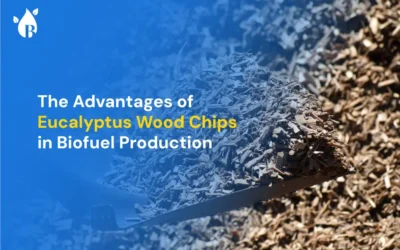
While global warming, climate change, and pollution have become pressing issues, biomass, and other cleaner energy alternatives are capturing attention. Using biomass as an alternative to fossil fuels has the power to reduce carbon emissions and enhance overall sustainability.
What are Biomass briquettes?
Biomass briquettes are made from wood and other organic wastes, and they serve as efficient and economical substitutes for coal, charcoal, and fossil fuels. Biomass briquettes are majorly used as cooking fuel and in heat and electricity generation. For developing countries that lack access to cooking fuels, biomass briquettes are evolving as one of the most promising energy sources. They are also used in industrial boilers to complement coal in producing the heat to be supplied to the boiler.
Biomass briquettes are also used in power plants, and they have the ability to cater to 5-15% of the energy requirements of a power plant. This helps substitute power generated from coal and fossil fuels to an extent.
The blog presents elaborate details on the composition and production of biomass briquettes.
Composition of biomass briquettes
As mentioned earlier, biomass briquettes are made from organic materials and residues from agriculture and forestry activities, and they include the following.
- Rice husk,
- Groundnut shell,
- Sawdust,
- Coffee husk
- Coir pith
- Cotton stalks
- Wooden biomass
- Peanut husk
- Bagasse briquettes
- Municipal wastes
- Agro residues
Many developing countries generate a large number of agro residues. As they are not efficiently used, they end up as waste polluting the environment.
The absolute composition of the biomass briquettes varies based on the availability of raw materials in that geographic location. Sawdust briquettes, wood briquettes, briquettes made from groundnut shells, rice husk, etc., are the most common types of briquettes because they are abundant.
How are biomass briquettes made?
The process of making biomass briquettes can be brought under four steps, and they are listed below.
- Collecting the biomass materials
- Grinding them into fine pieces
- Compressing and densification
- Drying
Organic materials and agricultural wastes form the primary raw materials. The biomass materials are gathered and ground into fine pieces. Usually, the briquette size ranges from 2-6 inches in diameter. The size of the briquettes depends on the intended usage and nature of the final product. Biomass briquettes are made in rectangular, cylindrical, spherical, cubical, or other shapes depending on the purpose.
The biomass materials are mixed and compressed with organic binding agents like cellulose, wax, scratch, etc., to form blocks. Using additives enhances the durability of the briquettes.
What are the advantages of biomass briquette?
Higher efficiency
In their original form, biomass waste materials lack density and so have lower combustion efficiency. When burnt as briquettes, their thermal and ignition efficiency improves. They have low moisture and density when compared to conventional sources, and so carry a higher efficiency.
Burn longer
As biomass briquettes are made by compressing the raw materials, they are more compact and concentrated than their original form. Compacted biomass briquettes offer a more concentrated source of energy and have the potential to burn for longer periods than if they were let loose and unpacked.
Easy to store and transport
Densifying biomass materials into briquettes and pellets of uniform size and shape makes storage and transportation easier. Bio briquettes are ten times lower in volume than when they exist as loose biomass waste materials. Because we pile and mould them into proper shapes, they are easy to load, unload, store, and transport for long distances.
Cheaper energy source
As biomass briquettes are made from plant wastes and animal remains, they are relatively cheaper and less expensive than traditional sources of energy.
Greater sustainability
Biomass briquettes burn like charcoal briquettes, but they don’t emit carbon and pollute the environment. In composition, bio briquettes are completely different from charcoal briquettes as they do not have carbonaceous substances in their mix. In a way, biomass briquettes are a means to generate energy from bio-wastes, and so they are more sustainable than other non-renewable energy sources.
Read this blog also: Biomass Briquettes: Turning Waste Into Energy
Wrapping up
As biomass briquettes have high efficiency and are capable of burning for longer periods, they are evolving to be an ideal substitute for fossil fuels and non-renewable energy sources like oil or coal. Because they do not emit carbonaceous substances while burning, they help reduce pollution.
Buyofuel is a leading supplier of biomass briquettes in Coimbatore. If you are looking to buy or sell biomass briquettes in India, visit https://buyofuel.com/



